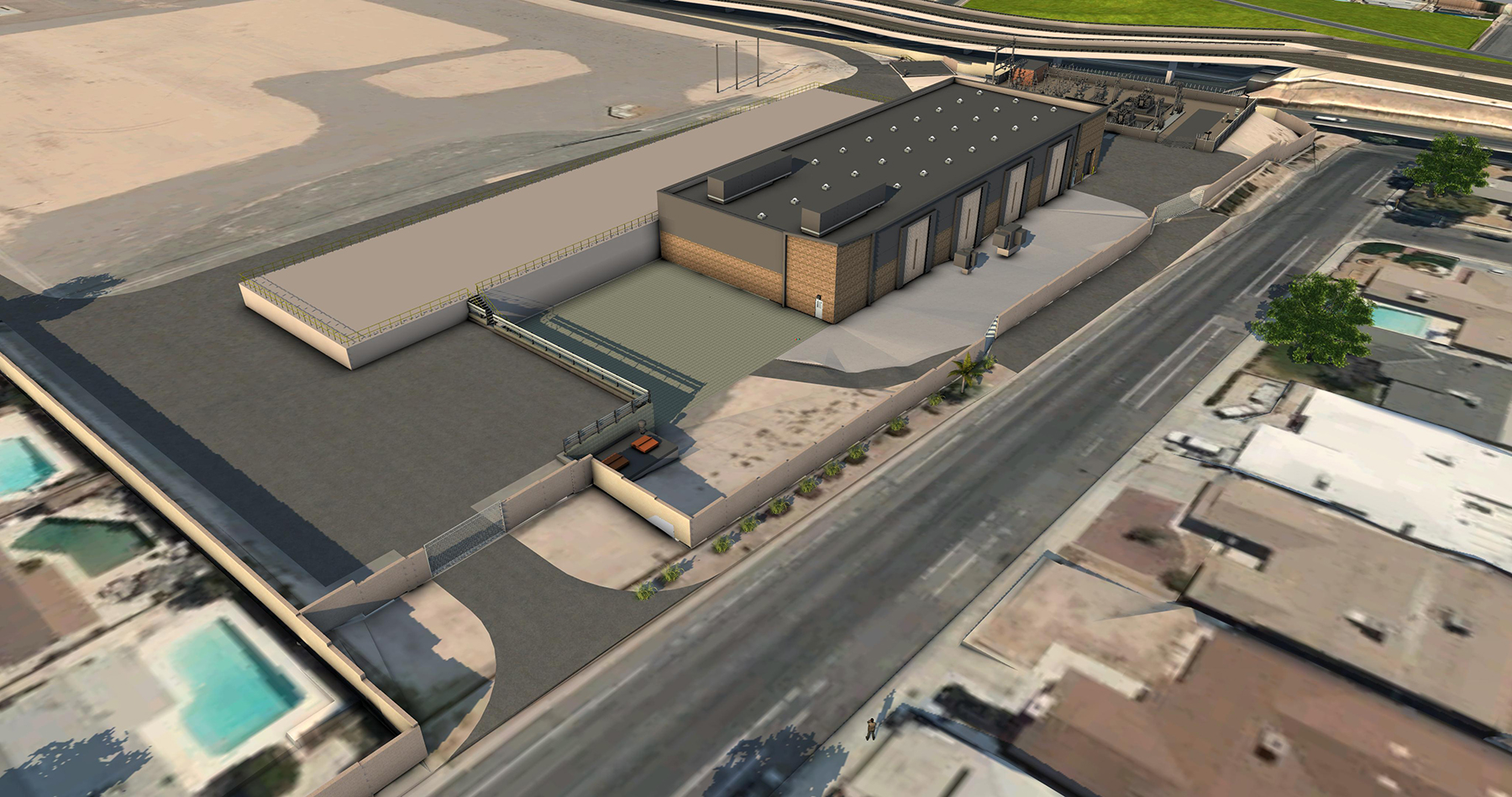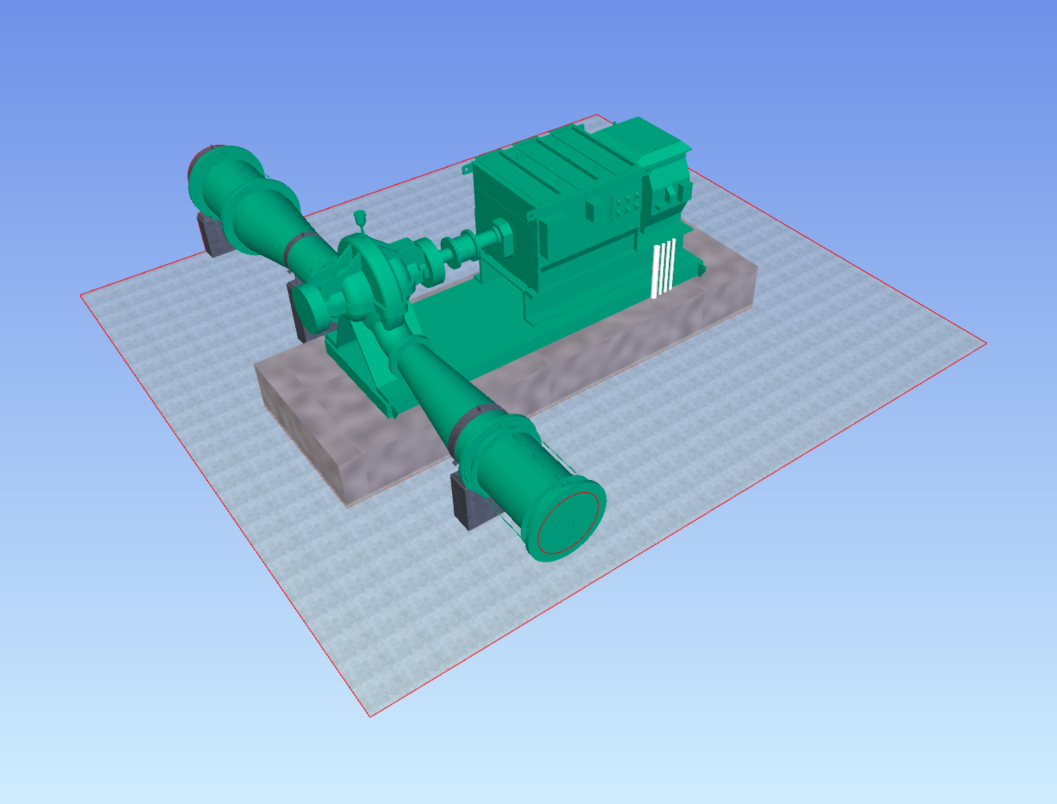By Jay Landers
With its growing population amid a desert environment, the Las Vegas Valley in southern Nevada has long felt pressure to conserve its limited water supply, much of which comes from Lake Mead on the Colorado River. As the ongoing historic drought continues to decrease water levels on Lake Mead to new lows, the Southern Nevada Water Authority, the wholesale water provider to the region, also is taking steps to improve the redundancy and resilience of its critical drinking water infrastructure.
A key component of this effort is the $125 million Stage II Reliability Upgrades Project, the main element of which is a new 90 mgd pumping station.

In February, the design firm Stantec completed the preliminary design for the project, which also includes approximately 2 mi of 66 in. diameter pipeline. The SNWA hired Stantec to design the project in July 2021.
Reliability and redundancy
Comprising seven member water agencies, the SNWA serves more than 2.2 million people in Southern Nevada. The project is part of the authority’s 2020 Major Construction and Capital Plan, which includes 22 projects having a total estimated cost of $3.17 billion.
As its name suggests, the Stage II Reliability Upgrades Project is intended to boost the reliability of the SNWA’s transmission system. In essence, the project will enable the authority to deliver water as efficiently as possible, says Jonathan Tull, P.E., a senior civil engineer for the Las Vegas Valley Water District, one of the member agencies of the SNWA.
“We have a network of delivery transmission systems” in the Las Vegas Valley, Tull says. “They tend to be geographically connected or focused.” This project connects “two of those systems that are not currently redundantly connected,” he says. In this way, the project “allows water to flow from one portion of our system to another portion and vice versa. It will actually allow for two-way flow, which provides that desired redundancy in terms of our ability to deliver to our customers.”
The project also will enable the SNWA to address local changes in water demand that have occurred in the decades since most of the existing transmission systems were designed, Tull says. Because of population growth and widespread adoption of water conservation measures, “some of our systems that were designed for a certain demand” are experiencing demands that differ from what was anticipated originally, he notes. “Providing these redundant connections allows us to adjust and address those various factors and continue to deliver water to the best and most efficient of our ability to do so.”
Connecting to the system
The 90 mgd pumping station will include a forebay and four centrifugal pumps that will be located in a heated and cooled enclosure. Each of the 2,600 hp pumps has a capacity of 30 mgd, says Margaret Regan, P.E., the project manager for Stantec. “It’s a good size station,” Regan says.

The project’s two 66 in. diameter pipelines will be made of steel and lined with concrete mortar. One will send the discharge from the pumping station to the Pittman Lateral, which conveys water to the central Las Vegas Valley. The other pipeline will supply the pumping station with water from another lateral.
In this way, the pipelines “will interconnect the new pump station facility with both of our existing laterals to the north and south,” Tull says.
Once operational, the pumping station will take some of the load off the existing Hacienda Pumping Station, a 180 mgd facility that transports approximately 35% of the region’s water. The new pumping facility will supplement the capacity of the Hacienda Pumping Station during periods of extreme demand as well as enable upgrades and replacements to be made to the workhorse facility, which has been in service for more than 40 years.
Design, construction challenges
One of the major design challenges to date has involved assessing the “hydraulics of the system” to ensure the compatibility of the planned project components with the current transmission infrastructure, Regan says. The project “connects two pieces of their existing system,” she notes. “Essentially, we have a big loop that we have to fit into. And our pumping has to fit with all the hydraulics of everything else. That was a pretty complicated process to evaluate.”
Expected to consist of mostly open-cut trenching, pipeline construction will occur in largely residential areas. Limiting disturbances to residents will be a key aim of the project, Regan says. “We’ve got a lot of neighbors there that we have to take care of during the construction in particular,” she says.
Stantec used a triple-bottom-line analysis to determine the most appropriate pipeline alignments and construction methodologies. For this process, the design team evaluated various technical factors, including geotechnical and groundwater conditions, as well as potential disruptions to residents, first responders, traffic, and parks, Regan says. The individual findings then were ranked and scored against one another to determine the preferred approaches for pipeline alignments and construction.
“Stantec did a fantastic job” with this analysis, Tull says. “That helped the authority out tremendously in terms of determining the alignment that we coalesced around.”
Final design for the project is expected to be completed in summer 2023. To facilitate project procurement and phasing, construction is anticipated to begin in summer 2026 and last 2 ½ years.



